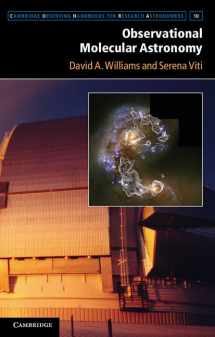
Observational Molecular Astronomy: Exploring the Universe Using Molecular Line Emissions (Cambridge Observing Handbooks for Research Astronomers, Series Number 10)
Book details
Summary
Description
Molecular line emissions offer researchers exciting opportunities to learn about the evolutionary state of the Milky Way and distant galaxies. This text provides a detailed introduction to molecular astrophysics and an array of useful techniques for observing astronomical phenomena at millimetre and submillimetre wavelengths. After discussing the theoretical underpinnings of molecular observation, the authors catalogue suitable molecular tracers for many types of astronomical regions in local and distant parts of the Universe, including cold gas reservoirs primed for the formation of new stars, regions of active star formation, giant photon-dominated regions and near active galactic nuclei. Further chapters demonstrate how to obtain useful astronomical information from raw telescope data while providing recommendations for appropriate observing strategies. Replete with maps, charts and references for further reading, this handbook will suit research astronomers and graduate students interested in broadening their skill to take advantage of the new facilities now coming online.


We would LOVE it if you could help us and other readers by reviewing the book
Book review



